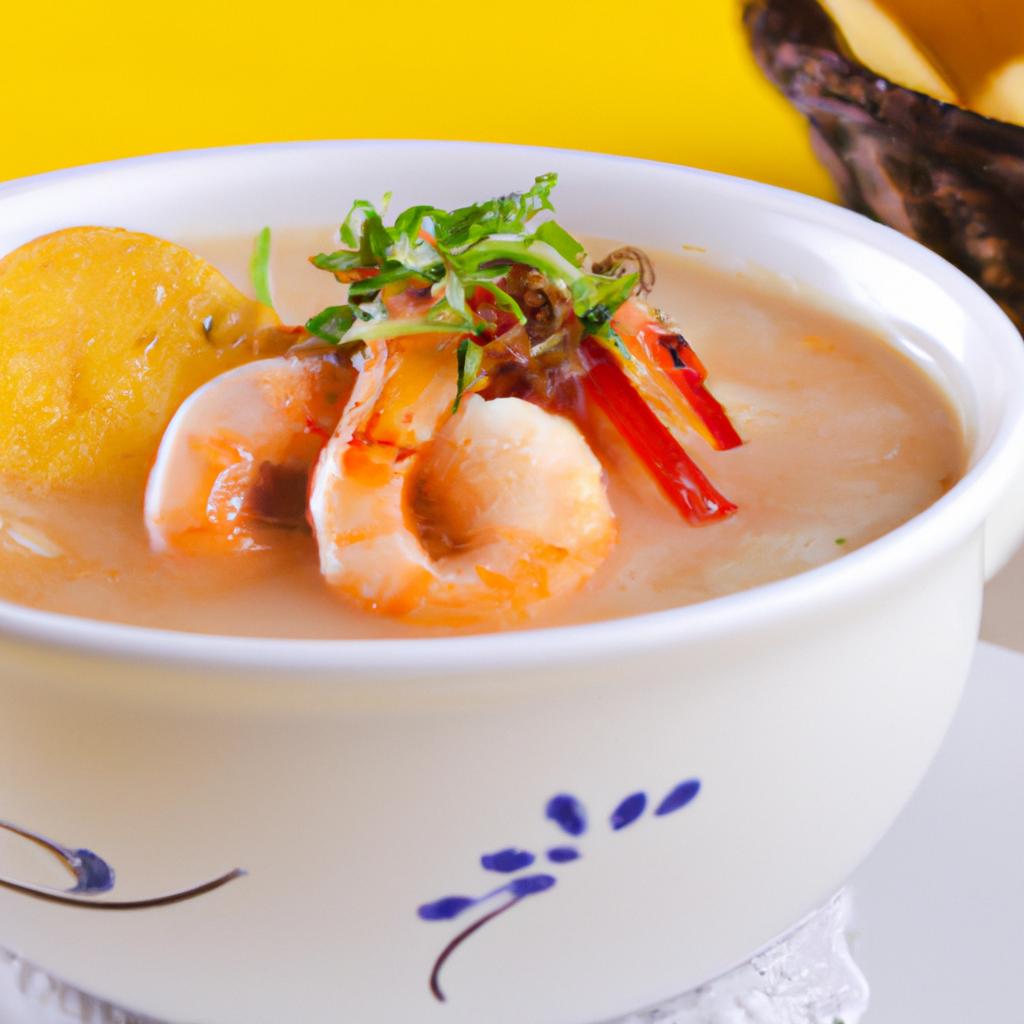Chupe de Camarones

Peruvian cuisine is a delightful amalgamation of different cultures and influences that have come together to create something truly unique. One such dish that encapsulates the essence of Peruvian cuisine is the Chupe de Camarones or Shrimp Chowder, a hearty soup that is filled with the flavors of the coast.
The dish originated in the coastal regions of Peru, where seafood reigns supreme. The name “chupe” is derived from the Quechua word “chupi,” which means thicken or to make thick. The dish is therefore named after its hearty, thick consistency. Chupe de Camarones is a staple of Peruvian cuisine and is celebrated for its rich flavors, vibrant colors, and ability to bring people together.
Peruvian chupe is believed to have originated from the pre-Incan civilizations, who relied heavily on seafood for their diet. Over time, the dish took on new flavors and techniques with the arrival of Spanish colonialism in the 16th century. The Spanish introduced new ingredients and spices to the region, which helped to create the unique flavors of modern-day chupe. The dish’s popularity grew as it spread throughout the country, and people began adding their own touch to the recipe.
Today, chupe is prepared in various ways throughout Peru based on regional variations and personal preferences. Some variations include adding cream, potatoes, corn, or even cheese. However, the classic chupe recipe remains centred around shrimp and a variety of traditional Peruvian ingredients.
Peruvian chupe de camarones is a soup that is made using a plethora of ingredients, including potatoes, corn, peas, carrots, and red peppers. These vegetables provide a range of textures, colors, and flavors to the dish. The shrimp are the key ingredient that makes this dish such a standout. They provide a unique sweetness and flavor to the dish that cannot be replicated by other seafood. The broth of the dish is thickened with a roux, which adds a creaminess to the soup.
To make the perfect Peruvian chupe de camarones, it is essential to get the balance right between the ingredients. The dish is not overly spicy but has a subtle warmth to it that brings out the flavors. The dish is also not heavy, despite its thick consistency, which makes it perfect for any time of the day.
Chupe de camarones is a dish that is perfect for sharing with family and friends. Peruvians love to come together over food, and this dish provides an excellent opportunity for just that. Sharing a bowl of Peruvian chupe de camarones with loved ones is one of the many ways to experience the country’s rich culinary heritage.
In conclusion, chupe de camarones is a classic Peruvian dish that is steeped in tradition and history. It is a hearty soup that is sure to warm your belly and comfort your soul. Whether you are on the coast of Peru or in your home kitchen, this dish is a must-try for anybody who loves seafood, vibrant flavors, and an authentic culinary experience.
Ingredients:
-1 pound of peeled and deveined shrimp -2 cups of diced potatoes -1 cup of diced carrots -1 cup of diced onions -1 cup of frozen peas -1 cup of milk -1 cup of heavy cream -4 cups of chicken broth -1/4 cup of diced jalapenos -4 cloves of minced garlic -2 tablespoons of aji amarillo paste -1 tablespoon of dried oregano -1 tablespoon of dried thyme -2 bay leaves -Salt and pepper to taste
Directions:
-
In a large soup pot, add the chicken broth and heat until it starts to boil.
-
Add the potatoes and carrots, and cook for 5-6 minutes, or until they start to soften.
-
In a separate pan, sauté the onions and garlic until they are soft.
-
Add the aji amarillo paste to the onions and garlic, and cook for 2-3 minutes.
-
Add the jalapenos, oregano, thyme, and bay leaves to the soup pot.
-
Add the onion and garlic mixture to the pot, and stir well.
-
Add the shrimp, and cook for 2-3 minutes, or until the shrimp are pink.
-
Add the peas, milk, and heavy cream, and stir well.
-
Cook for another 5 minutes, or until everything is heated through.
-
Season with salt and pepper to taste.
-
Serve hot with bread on the side.